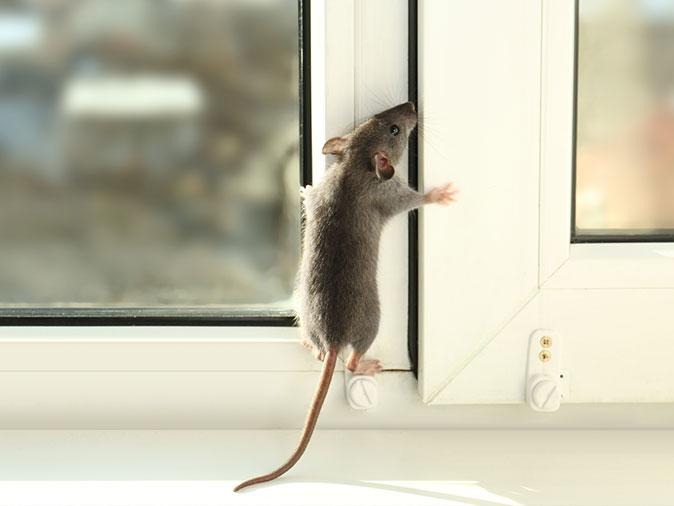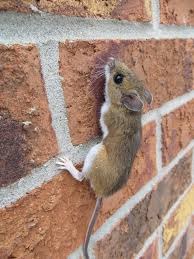Introduction
Rats are fascinating creatures with incredible survival skills. One of the most surprising abilities is their knack for climbing walls. But can rats climb walls as easily as we think? This question might make your skin crawl, especially if you’ve ever heard scurrying sounds in your attic or walls.
The idea of rats sneaking into our homes and scaling walls is unsettling. Understanding how they do this could help protect your home from an infestation. By knowing the answer to the question, can rats climb walls, you can take the right steps to prevent these rodents from entering.
In this article, we will explore the many reasons why rats can climb walls, their physical abilities, and how they use their environment to survive. Read on to learn more about their mysterious climbing skills and how to keep your home safe from these tiny acrobats.
Anatomy of a Rat: The Perfect Climbing Machine
Strong Legs and Sharp Claws
One of the main reasons rats can climb walls is their physical anatomy. Their legs are strong and muscular, giving them the strength to push off surfaces and climb upward. Their claws, on the other hand, are extremely sharp and help them grip onto surfaces like brick, wood, and even concrete.
Rats’ claws act like natural grappling hooks, allowing them to latch onto small cracks and imperfections in walls. When you ask, can rats climb walls, it’s essential to consider how their bodies are designed for climbing. Even the smoothest walls may have tiny features that rats can use to pull themselves up.
Their feet also have pads that provide extra traction. This allows them to maintain a firm grip as they scale a wall. Whether it’s a vertical surface or an uneven one, rats use their claws and legs to make climbing look easy.

Flexibility and Balance
Another key reason rats can climb walls is their incredible flexibility. Rats have flexible bodies, which allow them to squeeze through small spaces and maneuver around obstacles. Their flexibility also helps them maintain balance while climbing.
Rats can easily twist and contort their bodies, helping them navigate tricky terrain like rough or uneven walls. Their long tails also serve an important purpose. The tail acts like a counterbalance, helping rats stay steady even on steep climbs. Without their tails, rats might struggle to maintain their balance on vertical surfaces.
When considering whether rats can climb walls, it’s important to remember that their agility, flexibility, and balance all work together to make them expert climbers.
Tiny Size, Big Advantages
Rats are small creatures, and this gives them a significant advantage when climbing walls. Being small allows them to fit into tiny cracks and gaps, which can be used as footholds or handholds. So, when someone wonders, can rats climb walls, it’s their small size that often helps them accomplish this feat.
Their small bodies can squeeze into spaces we might not even notice. This ability to fit into narrow cracks and crevices gives them more opportunities to grip onto a surface and climb. A rat’s body is perfectly designed for slipping through tiny openings and using them as stepping stones to get higher.
Can Rats Climb Different Types of Walls?

Brick Walls
One of the most common places where people might wonder, can rats climb walls, is with brick structures. The rough surface of brick walls provides an ideal climbing environment for rats. The uneven texture and gaps between bricks allow rats to dig their claws in and scale these surfaces with ease.
Even though bricks seem solid and impenetrable, the reality is that there are plenty of small cracks and spaces where a rat can grab hold. Rats often use these gaps as footholds, making brick walls one of the easiest surfaces for them to climb.
Wood and Plaster Walls
For those wondering whether rats can climb walls made of wood or plaster, the answer is still yes. These materials often have imperfections, cracks, or holes that rats can exploit. Even smooth wooden surfaces can sometimes provide enough traction for a determined rat.
Wood walls, especially those found in older homes, are often weathered and may have cracks or uneven surfaces that give rats the grip they need. Similarly, plaster walls can develop cracks over time, which can serve as convenient climbing paths for these agile rodents.
Even though these walls might seem more challenging, rats’ determination and strong climbing skills help them overcome these obstacles with ease.
Concrete and Smooth Walls
Now, the big question: can rats climb walls made of concrete or smooth materials? The answer is more complex. While it’s harder for rats to climb perfectly smooth surfaces, it’s not impossible. Concrete, while appearing smooth, often has small imperfections, holes, or ridges that rats can use to climb.
If a concrete wall is perfectly smooth, it would be much harder for a rat to scale it. However, since most walls are not perfectly smooth, rats can usually find a way to make their way up. It’s all about whether the wall provides just enough grip for their claws to latch on.
In some cases, smooth surfaces may be combined with other materials or nearby objects, giving rats an indirect path to climb.
How Rats Use the Environment to Climb
Pipes, Vines, and Cables
Even if walls are difficult to climb, rats are resourceful creatures and can use the surrounding environment to help them. If someone wonders, can rats climb walls when pipes, vines, or cables are nearby, the answer is absolutely yes.
Rats often use things like pipes, electrical wires, and vines as ladders to climb walls that would otherwise be too smooth or steep. These objects provide rats with an extra point of contact, making it easier for them to reach high places.
Vines, in particular, are a common pathway for rats to scale the sides of buildings. The twisting branches provide ample grip, making them perfect climbing tools for these small rodents.
Furniture and Other Structures
In homes, rats can use furniture and other objects to help them reach higher places. If there is furniture or stacked items against a wall, rats can climb these structures before moving onto the wall itself. This is why people often see rats in attics or high shelves – they can use whatever is in the environment to their advantage.
A well-placed bookshelf or stack of boxes can become an unintended ladder for a rat. So, when someone asks, can rats climb walls, the answer might also depend on what other structures are nearby to help them along the way.

Climbing with Purpose
When considering whether rats can climb walls, it’s also essential to think about why they are climbing in the first place. Rats don’t climb walls for fun; they are often searching for food, water, or shelter. If a rat senses a food source on the other side of a wall, they will do everything they can to reach it.
Their excellent sense of smell helps them locate food even from a distance, and if that food is behind a wall or up high, they will use their climbing skills to get there. In some cases, rats may also climb walls to escape predators or find a safe place to nest.
Preventing Rats from Climbing Walls
Sealing Cracks and Holes
If you’re concerned about whether rats can climb walls in your home, one of the first steps to prevent it is sealing any cracks or holes in your walls. Even the tiniest gaps can provide a foothold for a rat, so it’s crucial to inspect your home’s walls and seal any potential entry points.
Rats can fit through incredibly small openings, so be thorough in your search. Sealing cracks and gaps with materials like steel wool or caulk can help deter rats from using these entry points.
Using Rat Guards and Traps
Another effective method to prevent rats from climbing walls is to install rat guards or traps. Rat guards are physical barriers placed on walls, pipes, or cables to stop rats from climbing. These guards can be especially useful on walls with nearby pipes or vines that rats might use to climb.
Traps, both inside and outside the home, can also help reduce the rat population and prevent future infestations. Make sure to place traps in areas where you suspect rats might be climbing.
Removing Climbing Aids
Since rats often use their environment to assist with climbing, one of the best prevention strategies is to remove objects they might use. For instance, trimming vines and trees near your home’s walls can eliminate one of their climbing tools.
If you keep outdoor furniture or items near your home’s exterior walls, consider moving them to a different location. By removing objects that give rats an easy climbing path, you can make it more difficult for them to scale your walls.
Conclusion
After exploring the various reasons rats can climb walls, it’s clear that these creatures are highly skilled at navigating vertical surfaces. Their anatomy, including strong legs, sharp claws, and flexible bodies, makes them excellent climbers. Whether it’s a brick, wood, or even a concrete wall, rats can find ways to grip onto surfaces and scale them with ease.
Understanding how rats can climb walls helps us take better precautions to protect our homes from these rodents. By sealing cracks, using traps or rat guards, and removing environmental aids like vines and furniture, we can reduce the risk of a rat infestation.
Ultimately, answering the question can rats climb walls sheds light on their remarkable abilities and gives us the knowledge to keep them out of our homes. Stay vigilant, and you’ll be better prepared to defend your space against these persistent climbers.

[…] Can Rats Really Climb Walls? Discover Their Hidden Skills! […]